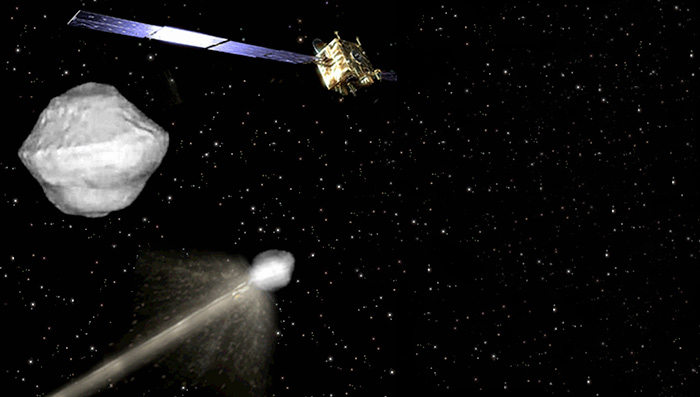Make Magazine has announced Maker Camp 2013, 30 Days of Discovery, a free online “camp” based on the Google+ social-media platform. Maker Camp 2013 runs from July 8 to August 16.
Swiss Space Systems (S-3) recently announced its intent to develop a small satellite launcher. The S-3 launcher would comprise an unmanned spaceplane carried on the back of a zero-g-certified Airbus A300. The spaceplane would be launched from the A300 at an altitude of 10 kilometers (32,800 feet) and climb to an altitude of 80 kilometers (49 miles) on rocket power. At that point, it would deploy an upper stage and satellite before gliding back to its spaceport for landing, as shown in the following video.
[youtube=http://www.youtube.com/watch?v=_sLx6VH9EVU&w=700]
Swiss Space Systems, which is working with the French Aerospace firm Dassault and Belgian firms Sonaca and Space Application Services, will leverage work previously done for the European Space Agency’s Hermes spaceplane and NASA’s X-38 lifting body. The system is designed to launch satellites weighing up to 250 kg (550 pounds) at a price of 10 million Swiss Francs (about $10.5 million) per launch. The company hopes to bring the new launch system to operation by 2017 at a cost of 250 million Swiss Francs (about $260 million). It has already signed a contract with the Van Karman Institute for four launches.
Although unconventional, the idea of using a large airliner as a launch platform for a reusable spaceplane is not a new idea. In fact, the idea is more than 30 years old.
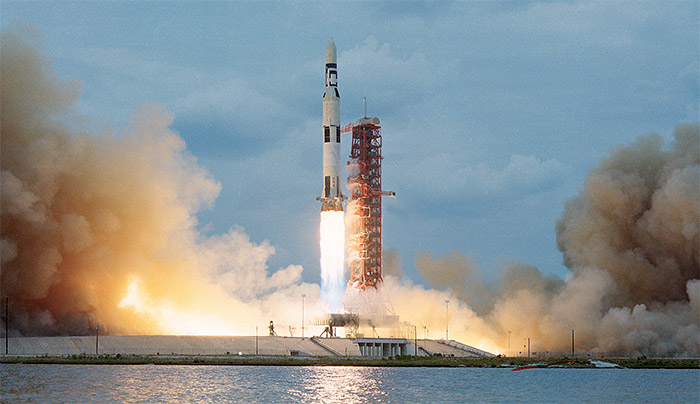
2013 marks the 40th anniversary of the Skylab, America’s first space station.
 Some things have not changed since the end of the Cold War. Russia is still making the mistake of believing its own propaganda.
Some things have not changed since the end of the Cold War. Russia is still making the mistake of believing its own propaganda.
A new article by Alexei Lyakhov and Artyom Kobzev proclaims, “Russia Has No Rivals in Space Tourism.” The article was published by the Voice of Russia, the international radio service of the All Russia State Radio and Television company.
On October 7, 1958, NASA Administrator T. Keith Glennan formally approved the fledgling space agency’s proposal for a manned satellite project.
Many people are familiar with the events of May 5, 1961, when US Navy Commander Alan B. Shepard, Jr., became the first American to reach space. Less well known, however, are the events of May 4, 1961. The day before Shepard became America’s first astronaut, two other Navy officers ventured to the edge of space beneath a plastic balloon on the Strato Lab High V flight.
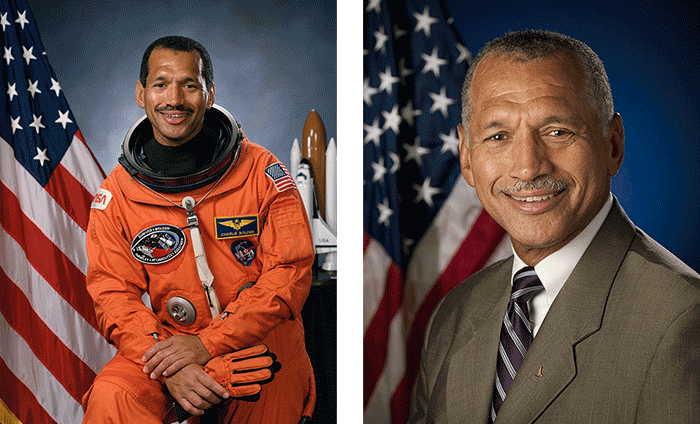
NASA Administrator Major General Charles Bolden says he will have to make cuts to NASA’s “Commercial Resupply Services” contract, Aviation Week reports.
NASA has awarded CRS contracts to Space Exploration Technologies (SpaceX) and Orbital Sciences Corporation for 12 and 8 cargo missions, valuaed at $1.6 billion and $1.9 billion, respectively.
On April 25, General Bolden told the Senate Appropriations Committee, “I’ll have to renegotiate those contracts. We won’t fly the number of missions that we have. Right now we’re flying 20 commercial cargo missions to the International Space Station over the next five years for three-point-some-odd billion dollars, an incredible value to the nation. I can’t carry that out under sequester.”
It’s hard to see how the proposed renegotiation would save money, however. The International Space Station needs a certain number of cargo flights to operate. There are some optional science experiments, but science aboard ISS is already severely restricted and it’s hard to see how it could be cut much further.
Researchers at the University of Connecticut and Penn State Altoona have developed nanoscale antennas that convert sunlight to electricity with much higher efficiency than solar cells — up to 70%. See articles here and here.
The idea of using nanoantennas to collect solar energy has been around for a while, but fabricating the antennas has been a problem up to now. Brian Willis, associate professor of chemical, materials, and biomolecular engineering at the University of Connecticut, believes he has solved that problem, using the atomic layer deposition (ALD) fabrication process, which he developed in 2011 at the University of Delaware.
If perfected, this technology could be a boon for spacecraft and satellite design.

When commercial suborbital flights begin, they will follow a trail blazed fifty years ago by the X-15 research aircraft.
NASA’s FY2014 budget request was officially presented last week. As expected, the news is not good for NASA Education.
On April 12, 1961, Soviet news agencies announced that Red Air Force Major Yuri A. Gagarin had just orbited the earth in a spacecraft named Vostok. Unknown and anonymous the day before Gagarin, the world’s first cosmonaut, abruptly became an international celebrity.
Tim Pickens, who developed the propulsion system for SpaceShip One, talks about the significance of the project.
[youtube=http://www.youtube.com/watch?v=QKz1QqYYIl0&w=700]
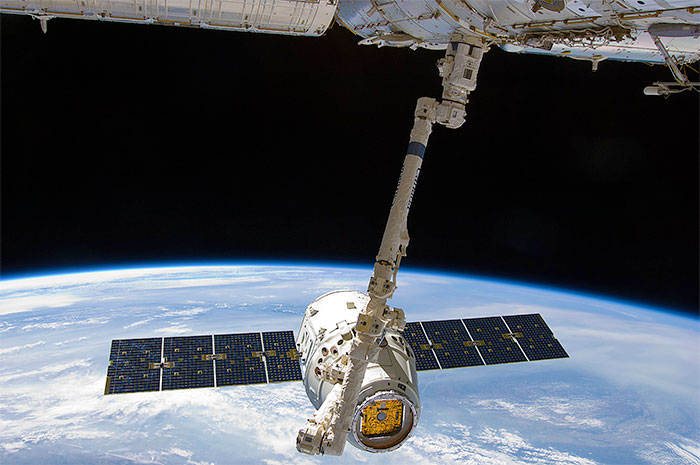
NASA’s Commercial Crew and Cargo Development (CCDev) program keeps getting smaller all the time.
Last June, Congress forced a “compromise” on NASA, which was more like a surrender. Under this “compromise,” NASA was forced to reduce the number of companies in the CCDev competition from five to three. The third company (Sierra Nevada) received a much smaller amount of funding than the primary competitors (SpaceX and Boeing), so the current field is often referred to as “two-and-a-half competitors.”
Now, it appears the field is about to shrink further. At a hearing on March 20, NASA Administrator Maj. Gen. Charles Bolden told Congress, “We intend to put a request for proposal on the street this summer and you will probably get a downselect.” The losers will be kept hanging for a while, however. “You won’t see the selection announced until the middle of next year, 2014,” Bolden said.
On Friday, NASA issued an internal memo suspending all education and public outreach activities, pending budget review.
Effective immediately, all education and public outreach activities should be suspended, pending further review. In terms of scope, this includes all public engagement and outreach events, programs, activities, and products developed and implemented by Headquarters, Mission Directorates, and Centers across the Agency, including all education and public outreach efforts conducted by programs and projects.
The only exceptions are certain press activities: mission announcements, breaking news, and replies to media inquiries. Update: NASA Assocation Administrator for Education Leland Melvin sent out a followup memo on Friday, which exempts certain activities from the suspension. Exempted activities are:
- Digital Learning Network activities currently scheduled
- FIRST Robotics
- Flight Projects (specifically ARISS, EarthKAM, Education downlinks, Zero Robotics)
- Great Moonbuggy Race
- Lunabotics Competition
- Microgravity University activities currently scheduled
- NASA Educational Technology Services (NETS)
- NASA Internships. Fellowships, and Scholarships
- NASA Museum Alliance
- Science Engineering Mathematics Aerospace Academy (SEMAA)
- Student Launch Initative and Undergraduate Student Launch Initiative
- Summer of Innovation

NASA had the opportunity to make the case for planetary defense at last week’s meeting of the House Science Committee. Unfortunately, as Jeff Foust reports, NASA Administrator Major General Charles Bolden (USMC-ret.) failed to make that case.
In fact, General Bolden actually pleaded with Congress not to “pour money into NEO detection and characterization,” saying “that would not be the right thing to do.”
The Federal Communications Commission has issued a Public Notice to help commercial space companies obtain use of communications frequencies for launch, operations, and reentry. Unfortunately, the FCC requirements don’t seem to meet the needs of high-rate launch operations that are expected in the near future.
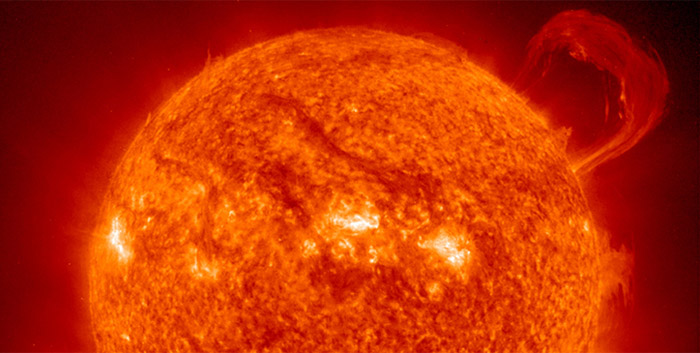
NASA has powered down the Mars Science Laboratory Curiosity as a precautionary measure due to a solar flare.
In 2003, a solar storm damaged a radiation instrument on the Mars orbiter Odyssey. NASA does not believe the radiation from this flare poses any danger to Curiosity but is being extra cautious due to recent computer problems with the $1.6 billion rover.
This shutdown illustrates the need for good space-weather forecasting for in-space operations, but space weather also affects the Earth. It will be important for future space travelers as well.

Several pieces of legislation affecting commercial spaceflight are on the docket of the Texas legislature this session.
The proposed Asteroid Impact and Deflection Assessment mission, currently under study by the European Space Agency and the Advanced Physics Laboratory at Johns Hopkins University, now has a target: Didymos, a binary asteroid scheduled to pass within 11 million km of Earth in 2022.
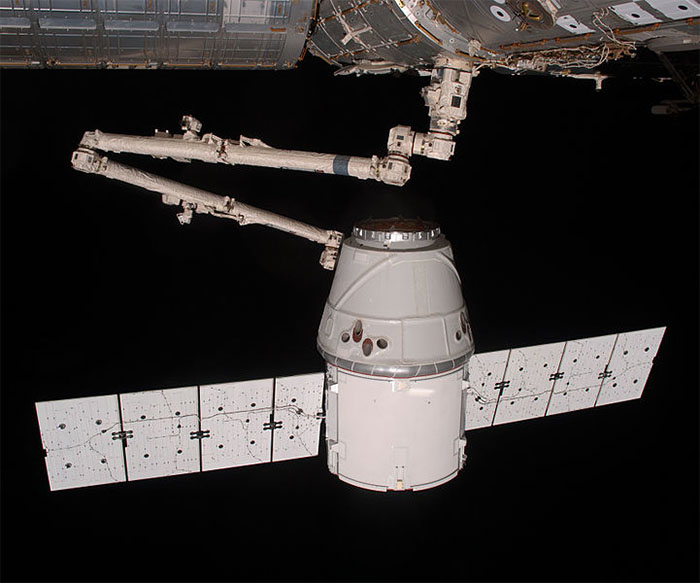
Space Exploration Technologies launched another Dragon capsule this morning, heading for the International Space Station. The launch of the Falcon 9 rocket was perfect, but the Dragon capsule has experienced some anomalies. SpaceX mission controllers have had trouble getting some of the thrusters online.
SpaceX founder Elon Musk explained the problem in a message to his Twitter followers: “Issue with Dragon thruster pods. System inhibiting three of four from initializing. About to command inhibit override.”
SpaceX now reports that vital signs on a second thruster pod are “trending positive.” When SpaceX has at least two pods restored, it will begin manuevering the capsule toward the space station. The loss of some thrusters could result a later-than-planned arrival at the space station. In the worst case, if SpaceX can’t get the second thruster pod working, the mission could be a total loss.
Some people have said that Dragon flights are becoming “routine,” but spaceflight will never be routine until we have reusable vehicles.
Expendable rocket and capsule: “We have a problem with our thrusters and can’t dock with the space station. Looks like we’ll have to abort the mission, lose the vehicle, the payload, and the $100 million customer payment. Space-station crew won’t have clean underwear for another three months. Life is tough.”
Reusable spacecraft: “We have a problem with our thrusters and can’t dock with the space station. Looks like we’ll have to return to base, call in the mechanics, and fly the mission again tomorrow. Space-station crew won’t have fresh sushi for another night. Life is tough.”
Because they don’t throw away expensive hardware, reusable vehicles can also afford more testing and redundancy. So, anomalies are less likely to occur and better tolerated when they do occur. For the most common failures, reusable vehicles are not only “fail safe” but “fail operational.” Most airline passengers are unaware of how often airliners suffer equipment failures in flight. Airliners have enough redundancy that when a piece of hardware fails, the pilots simply shut it down and report the failure to mechanics when the plane lands. Spaceflight needs to evolve to the same point.
Again, we’re just saying.
The Week has published an article on citizen space exploration, or space tourism, as they prefer to call it.
We dislike the term “space tourism” because of the way it is misused by detractors to disparage citizen space travel as a frivolous activity for rich vacationers. Their usage of the word tourism is actually quite ignorant. The travel industry uses the “tourism” to include business tourism as well as vacation tourism. To quote one website, “Business tourism is one of the leading and most dynamically developing spheres of world economy.” Together, leisure and business tourism are the world’s largest industry; there is nothing frivolous about it.
[youtube=http://www.youtube.com/watch?v=-RR1w7_pyl0&w=700]
Leaving that quibble aside, the authors make one factual error. They ask, “Who first proposed space tourism?” and answer that it was Pan Am Airlines in 1968. That answer is not even close.
G. Harry Stine discussed public space travel in his book Earth Satellites and the Race for Space Superiority, which was published a few weeks after Sputnik but written (except for some brief introductory material) before.
Nor was Stine the first. The fact is, prior to the start of the US-Soviet space race, no one assumed that spaceflight would be a monopoly of government space agencies and government astronauts. Most people who thought about space travel at all assumed it would develop similar to the way air travel had developed, with short-range suborbital flights leading to longer-range suborbital flights and finally orbit.
Public space travel is often viewed as an anomaly, a distraction from the “serious” work of government space exploration. Nothing could be farther from the truth. The Space Race led the US down a false path toward the development of quick and dirty, but ultimately unaffordable, launch systems based on throw-away missile technology. After a long detour, we are finally returning to the road we would have followed in the 1960’s, if not for Sputnik.
NASTAR Center and the NASTAR Foundation have announced an exciting series of one-day professional-development workshops for teachers this summer.
All workshops, which are free for teachers, will take place at NASTAR Center, one of the world’s premiere commercial space training facilities.
A large meteor strike has been reported in Chalyabinsk, Russia, about 1500 kilometers east of Moscow. Reports indicate major damage to buildings, including a roof collapse at a zinc factory, and at least 102 people injured, many from broken glass, according to Associated Press.
The impact reportedly occurred at 9:20 AM local time, or 0320 GMT (10:20 PM EST).
[Update: Russia Today now puts the injuries at 950, including 159 children. 110 people are reported to be hospitalized. Nearly 3,000 buildings are reported to be damaged, including 34 medical facilities and 361 schools. There are no reports of fatalities yet, about half the windows in the city are broken, so there is danger from the cold.]
[Three impact craters have been found, one about 6 meters in diameter. Most of the damage appears to have been from the sonic boom. Based on data from five infrasound monitoring stations and calculations by Peter Brown at the University of Western Ontario, initial size estimates for the object have been revised upward. The current estimate puts the object, prior to entering the Earth’s atmosphere, at 49-55 feet in diameter (15-17 meters) and mass 7,000 to 10,000 tons. The energy released is estimated at nearly 500 kilotons. The event lasted for 32.5 seconds from atmospheric entry to the airborne disintegration. This is considered to be a 100-year event, which can be expected to happen about once in a a Century. Still, it could have been a lot worse.]
[It now appears this object came in on a different trajectory and was not related to 2012 DA14.]
It’s shocking that Near Earth Objects, which have so much potential for destruction, get so little respect. The recent National Academy of Sciences report on NASA’s Strategic Direction and the Need for a National Consensus, which dissed asteroid missions, is a good example. Perhaps this event will serve as a wakeup call for beltway insiders.
[youtube=http://www.youtube.com/watch?v=36MEsWC1Pzc&w=700]
[youtube=http://www.youtube.com/watch?v=XDqYclzto7k&w=700]
[youtube=http://www.youtube.com/watch?v=QIMKQihoYRI&w=700]
[google-map-v3 width=”700″ height=”400″ zoom=”3″ maptype=”roadmap” mapalign=”center” directionhint=”false” language=”default” poweredby=”false” maptypecontrol=”true” pancontrol=”true” zoomcontrol=”true” scalecontrol=”true” streetviewcontrol=”true” scrollwheelcontrol=”false” draggable=”true” tiltfourtyfive=”false” addmarkermashupbubble=”false” addmarkermashupbubble=”false” addmarkerlist=”Chalyabinsk, Russia{}1-default.png” bubbleautopan=”true” showbike=”false” showtraffic=”false” showpanoramio=”false”]
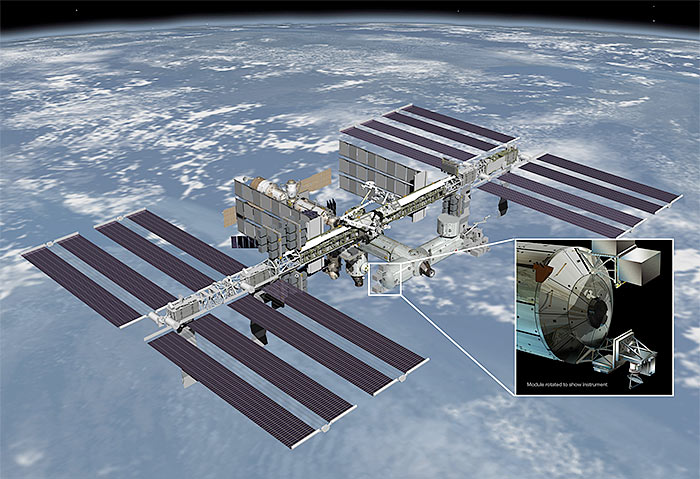
In a clever reuse of existing hardware, NASA will install a microwave scatterometer aboard the International Space Station. The new instrument, which NASA has dubbed RapidScat, uses test hardware originally built for the QuikSAT satellite program. Scatterometers are instruments for remotely measuring the ocean surface wind speed and direction. The ISS-RapidSCAT instrument will help improve weather forecasts, including hurricane monitoring, and understandings of how ocean-atmosphere interactions affect climate.

